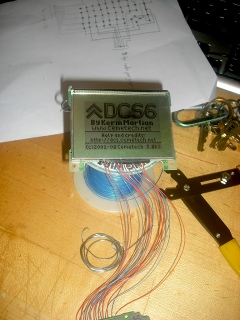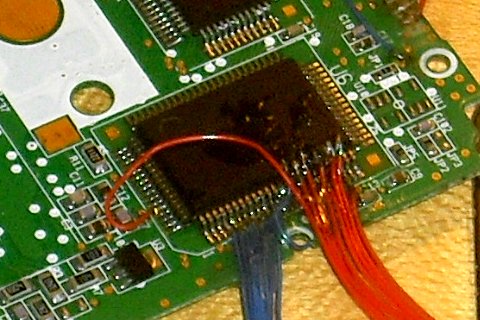- Ultimate Calculator 3 Dev Log
- 29 Jan 2010 02:53:21 pm
- Last edited by KermMartian on 04 Feb 2010 12:20:01 am; edited 1 time in total
The "Calculator Laptop" idea previously posted in this topic is starting to coalesce into the Ultimate Calculator 3 (following, of course, the Ultimate Calculator 1 and the Ultimate Calculator 2). The focus of this version will be more on form and functionality than previous designs, and less on added features. The PS/2 port will be retained, but a headphone port will be added, the planned keypad reconfiguration will be completed, and for the first time, a completely new case will be constructed. This final point is my largest obstacle at the moment; I'm currently leaning towards a slide-type design, wherein the "top" has arrow keys, 2nd and alpha (for "select" and "start"), clear (for "exit"), and the "bottom" has the QWERTY-style keypad with a slide joystick. This final item is what I worked on today. Last night I drew the following sketch:

This morning I went over to the lab and slapped it together with some perfboard, the joystick, four membrane pushbuttons, assorted wire and epoxy, nylon spacers and screws, and a piece of fiberglass board (the last of which was not in my original design). This module lets you slide the joystick, then press it down in any position, at the edges or in the center. It will prevent accidental presses from lateral motion by binding if uneven pressure is applied among the four guides. Photos follow; please excuse my current rather uneven nibbling to trim the size of the perfboard.




This morning I went over to the lab and slapped it together with some perfboard, the joystick, four membrane pushbuttons, assorted wire and epoxy, nylon spacers and screws, and a piece of fiberglass board (the last of which was not in my original design). This module lets you slide the joystick, then press it down in any position, at the edges or in the center. It will prevent accidental presses from lateral motion by binding if uneven pressure is applied among the four guides. Photos follow; please excuse my current rather uneven nibbling to trim the size of the perfboard.


























